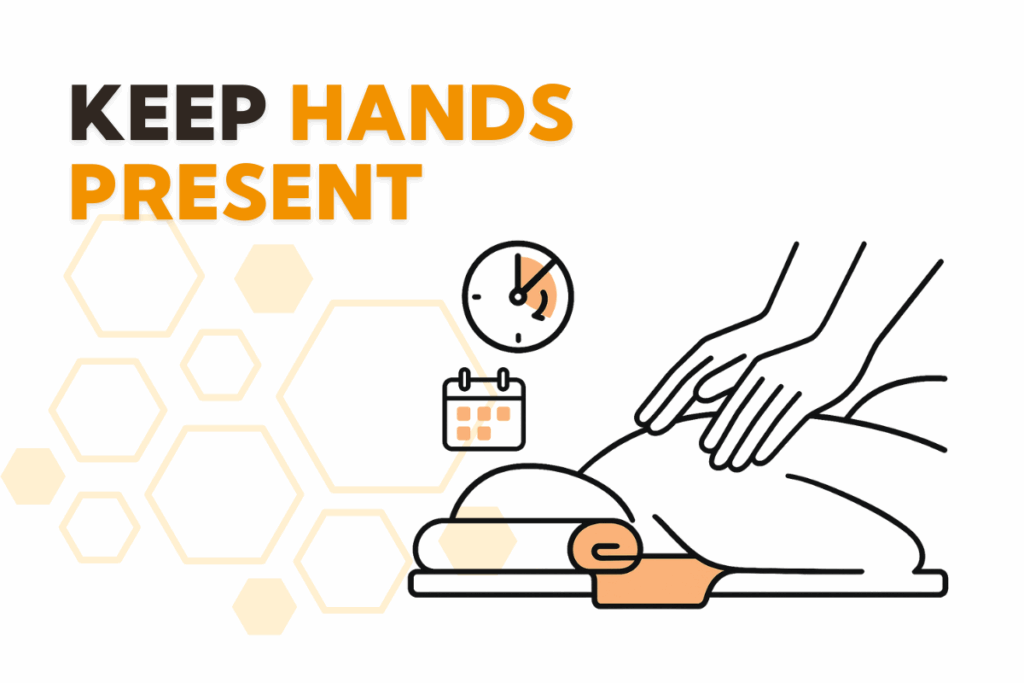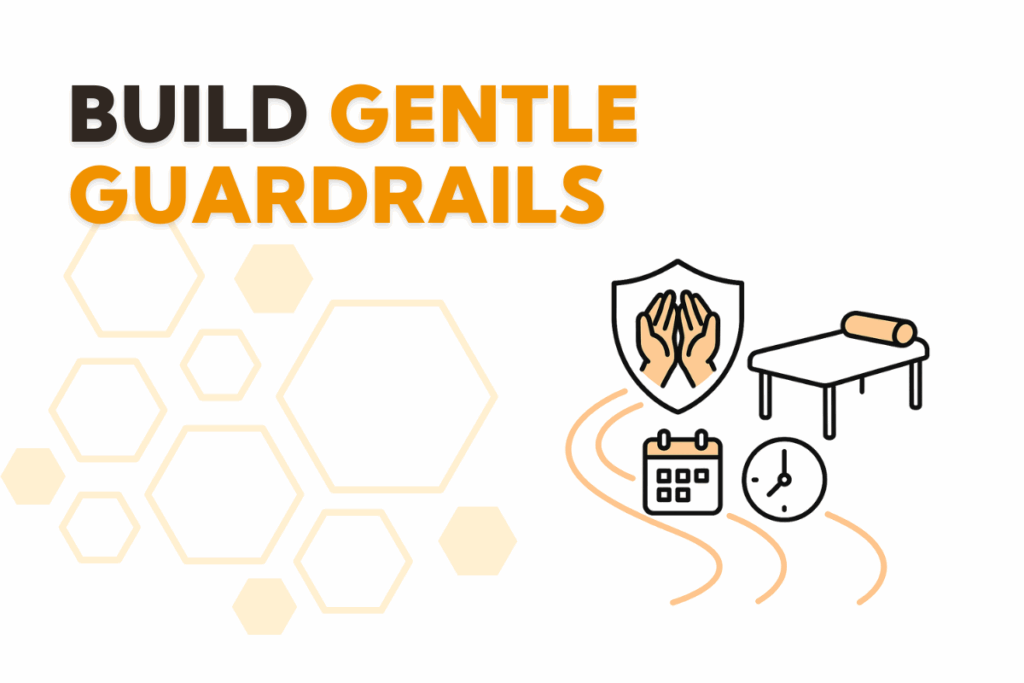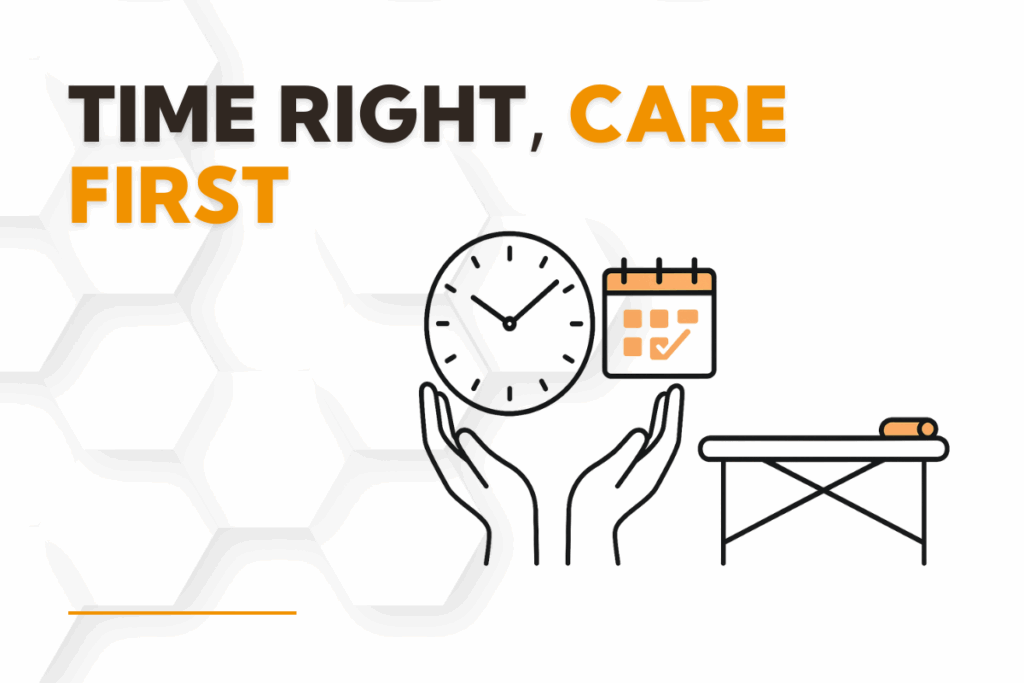A wrong-time appointment reminder can turn a calm day upside down. If a wrong-time appointment reminder lands in your client’s inbox, you feel that gut drop and wonder how to repair trust without derailing your schedule.
The moment every clinic recognizes
A wrong-time appointment reminder feels small until the ripple hits. The client is confused, your admin scrambles, and your therapist tries to stay present while messages fly. Even when revenue is not lost, the hidden costs are real: credibility, emotional energy, and the sense that your systems have your back.
Why wrong-time reminders happen in real clinics
A wrong-time appointment reminder is rarely about carelessness. It shows up when a busy clinic moves fast and details get split across tools and people.
Edits that echo after the queue is built
An appointment is moved, yet the reminder tied to the original time still fires because it was already queued earlier in the day.
Duplicate client profiles
Two records share an email or phone. The reminder attaches to the “other” appointment and goes out with the wrong time.
Calendars that do not agree
Clients import the visit to a personal calendar with different time zone or 12-hour versus 24-hour settings. Your source of truth says one time, their device shows another.
Template drift
You adjust a service duration or buffer after booking. The start time shifts and the queued reminder does not.
Side-door bookings
Marketplace or referral holds create a temporary slot. The final slot changes, but the hold still triggers the reminder.
Training debris
Old test appointments or staff blocks were never fully canceled, so reminders cannot tell they were not real.
Human pattern errors
AM versus PM flips, wrong-week clicks, or copying last week’s card without changing the time. Real humans under real pressure.

Steady the moment with care
When a wrong-time appointment reminder goes out, lead with calm ownership and give the client an easy next step.
What to say right away
Hi [Name], I am sorry for the confusion. You received a reminder for [wrong time], but your confirmed appointment is [correct time] with [therapist]. I have double-checked your booking and you are all set. Reply YES to confirm or NO if you need a new time.
If the system misfired, say so and state what you fixed.
You are right. We sent the reminder for the wrong time. I corrected it and added a check so it does not repeat. Thank you for flagging this.
Ten-minute verification checklist
- Confirm the correct booking in your single source of truth.
- Search for and merge duplicate profiles.
- Review recent edits on the appointment card.
- Pause the affected reminder rule for the rest of the day if you find a systemic trigger.
Quick fixes you can add this week
These fast steps reduce the odds of another wrong-time appointment reminder while you build long-term guardrails.
Make reminders human-readable
Spell out day, date, time, therapist, location, and time zone: “Tue, Sept 9 at 3:30 PM with Jordan (Main Street, MST).”
Add a correction catch-net
Include this line in every message: “If this looks off, reply NO and we will fix it.” It surfaces mismatches before they become no-shows.
Daily three-minute spot-check
Each morning, scan reminders for visits edited in the last 24 hours. Fix one pattern per week so improvements compound.
Consolidate booking ownership
Limit side-door entries from marketplaces or referral portals. Route all bookings through one source of truth before reminders queue.
Weekly client-record tidy
Merge duplicates, set a preferred contact channel, and note traveler time zones for frequent flyers.
Optional data assist
Use clinic reporting and analytics to spot recurring mismatch patterns like “edited within 4 hours of send” or “duplicate by email.” Pair the findings with a small playbook the team can run every Friday.
Guardrails that stop repeat embarrassment
A durable way to prevent a wrong-time appointment reminder is to teach your tools to follow your standard of care.
Rebuild logic after edits
If an appointment is moved inside a set window, cancel the old reminder and generate a fresh one automatically.
One-tap confirmation on reschedules
When staff or clients change a time, send a confirm step that updates the record and cancels any prior message.
Unique appointment identifiers
Add a short ID to each reminder. If a client forwards you a screenshot, you can trace the event in seconds.
Reminder timing that serves humans
Queue reminders close enough to capture late edits, but early enough that staff can intervene if something looks off.
Standardize service templates
Lock durations and buffers before publishing. Assign one owner for template changes and review them weekly.
Clear time zone labeling
Include your clinic’s time zone in every reminder and calendar invite. Avoid manual conversions and keep labels consistent.
Build a weekly mismatch report
Compare upcoming reminders to live schedules for therapist, service, duration, and start time. Fix the template, not just the single booking. A structured setup like automated email text reminders helps enforce send windows and reply handling.
Scripts and templates you can paste today
SMS apology
Hi [Name], I am sorry for the mix-up. Your confirmed appointment is [Day, Month Date] at [Time] with [Therapist]. Reply YES to confirm or NO if you need a new time. We appreciate you.
Email follow-up
Subject: We corrected your appointment time
Body: Hi [Name], thanks for flagging the reminder issue. We confirmed your visit for [Day, Month Date] at [Time] with [Therapist] at [Clinic]. We adjusted our settings to prevent repeats. If anything changes, reply here and we will take care of it.
Internal note
Issue: Wrong-time reminder for [Client]
Cause: [edit after queue, duplicate profile, calendar mismatch]
Fix today: [paused rule, corrected booking, notified client]
Guardrail: [edit-window logic, standardized templates, weekly mismatch report]

Measure what matters
Track the signals that tell you whether your fixes are working. Accurate reminders support attendance and protect your schedule.
Metrics to watch
- Count of wrong-time appointment reminder incidents and their root causes
- Same-day corrections caught by “reply NO”
- No-show rate trend after fixes
- Client satisfaction notes tagged to scheduling
Review rhythm that sticks
Hold a short weekly huddle. Share one incident without blame, name the pattern, choose one quick fix and one guardrail to implement. Small, steady improvements keep the room calm.
What this looks like in real clinic life
The reschedule ripple
A prenatal client moves from 2:00 to 2:30. The old reminder for 2:00 still fires. Front desk apologizes with the script, confirms 2:30, pauses the rule for the day, then enables edit-window logic so future moves cancel the earlier message. No further wrong-time appointment reminder that week.
The duplicate profile trap
A new client booked with a work email that already existed under a nickname. Two records. The reminder matched the wrong one. Admin merges profiles, sets preferred contact, adds a weekly duplicate sweep, and wrong-time appointment reminder incidents drop sharply.
The calendar mismatch
A client travels and imports the appointment to a device set to a different time zone. Staff add a clear time zone label to all reminders and include it in calendar invites. The confusion stops and no new wrong-time appointment reminder appears.
Keep the room calm when tech gets noisy
Own the moment with empathy, verify quickly, and build guardrails that make sense for the way your clinic runs. With a steady script, a simple checklist, and a weekly review, even a wrong-time appointment reminder becomes a teachable moment that strengthens trust.
Helpful evidence for your team
Accurate reminders support attendance and reduce missed appointments. Share this with staff who like to see the data: Cochrane review on reminders improving attendance.
FAQs
Acknowledge the confusion, confirm the correct time, and offer an easy path to reschedule. Then complete a ten-minute check for duplicates, recent edits, and rule timing. Pause any rule that misfired so it does not repeat.
Many clinics succeed with one reminder the day before, plus a confirm step when an appointment is edited. Two reminders can help for high-risk slots, but accuracy and timing matter more than volume.
Label the time zone in every reminder and calendar invite. Train staff to check traveler profiles for time zone notes. Keep language simple and consistent and avoid manual conversions.
Run a short mismatch report. Compare next day’s reminders to the live schedule. Fix one pattern each week, like template drift or duplicate profiles. Small, steady changes make a big difference.


